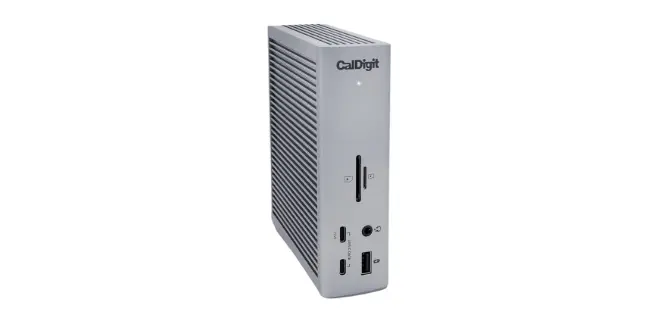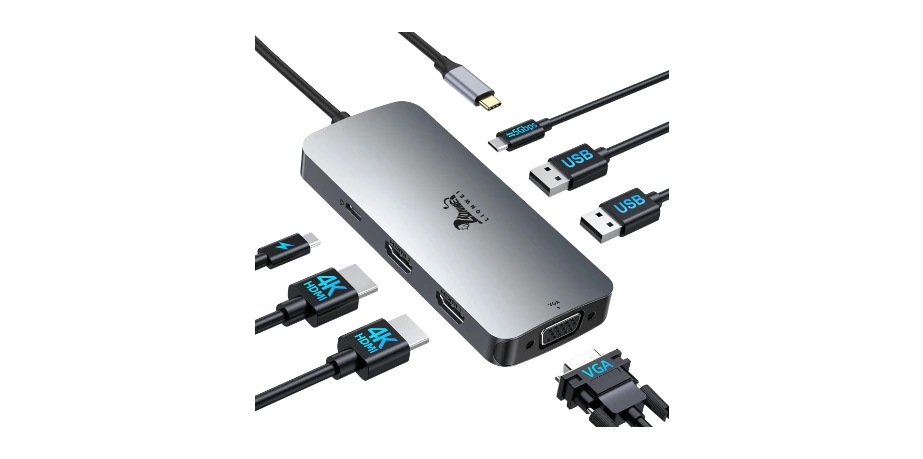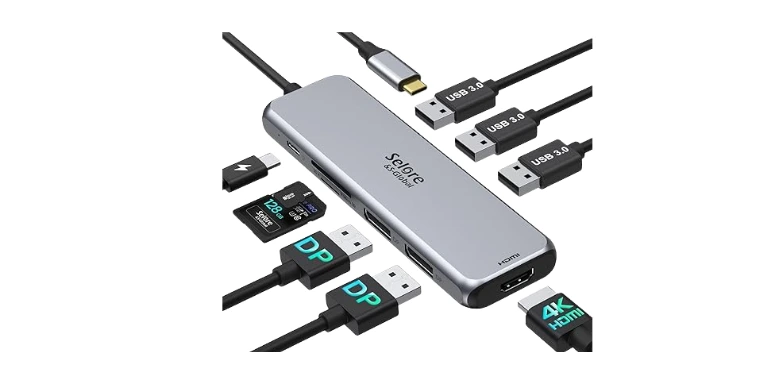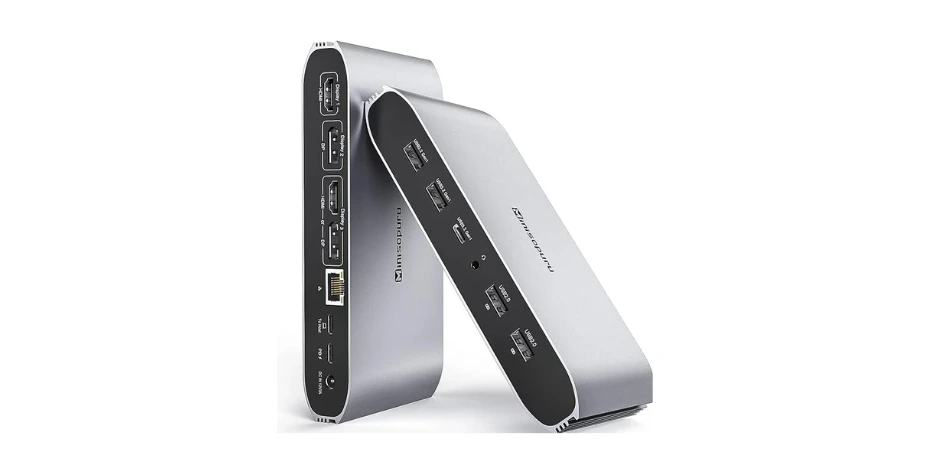Perfect Pairings: Docking Stations That Power Your Laptop + Screen
Have you ever found yourself tangled in a mess of cables, trying to connect your laptop to multiple devices and monitors, only to wish for a simpler solution? We have been there, too. It might seem like a small matter at first, but the relief of achieving a clutter-free, efficient workspace is just too good to ignore. Today, we’re diving into the world of docking stations, those magical devices that can power your laptop and expand your screen real estate in a snap. Imagine the absolute bliss of a single cable connecting your entire digital life. Let’s discuss the perfect pairings — those must-have docking stations — that seamlessly power your laptop and screen, transforming your desk into the command center of your dreams.
Understanding the Basics: What is a Docking Station?
A docking station is like a humble assistant that should never be underestimated. It connects to your laptop and provides additional ports, often more than you thought you’d ever need. These devices offer connectivity options such as USB ports, HDMI outputs, and even Ethernet. The primary goal? To broaden your laptop’s capabilities without overwhelming you with gadgets and clutter. We like to think of it as the Swiss Army knife of computer peripherals.
Do I Need a Docking Station?
Perhaps you’re wondering if a docking station is a necessity or merely a luxury. Consider your workspace: are you frequently connecting and disconnecting multiple USB devices, external monitors, or network cables? If your workspace sounds like a spaghetti junction of cables, then a docking station is right up your alley. It’s about providing an efficient and organized working environment.
In addition to enhancing connectivity, docking stations often provide power to your laptop, removing the need to carry around a separate charger. It’s one less thing to drag along, and we all appreciate the lighter load.
Types of Docking Stations: Finding the Right Fit
Choosing the perfect docking station can feel daunting. It’s a bit like picking out shoes; you need the right fit for your style and purpose. In the docking station world, we mainly encounter three types:
-
Port Replicators
These basic devices simply replicate the ports on your laptop. They are inexpensive but don’t offer any additional functionality beyond expanding port availability. Think of them as an extension cord for your laptop’s ports.
-
Thunderbolt 3 Docking Stations
Offering speed and power, Thunderbolt 3 docks are designed for heavy users. They can support multiple high-resolution displays and fast data transfer, making them ideal for content creators and power users alike.
-
USB-C Docking Stations
A more versatile option with a good balance between functionality and affordability. They typically offer multiple ports including USB, HDMI, and Ethernet. The future lies with USB-C, as it’s compatible with a wide range of devices.
A Quick Comparison
| Feature | Port Replicators | Thunderbolt 3 Docks | USB-C Docks |
|---|---|---|---|
| Price Range | Low | High | Medium |
| Port Availability | Medium | High | High |
| Power Delivery | Limited | High | Medium |
| Best For | Simple setups | Power users | Most users |
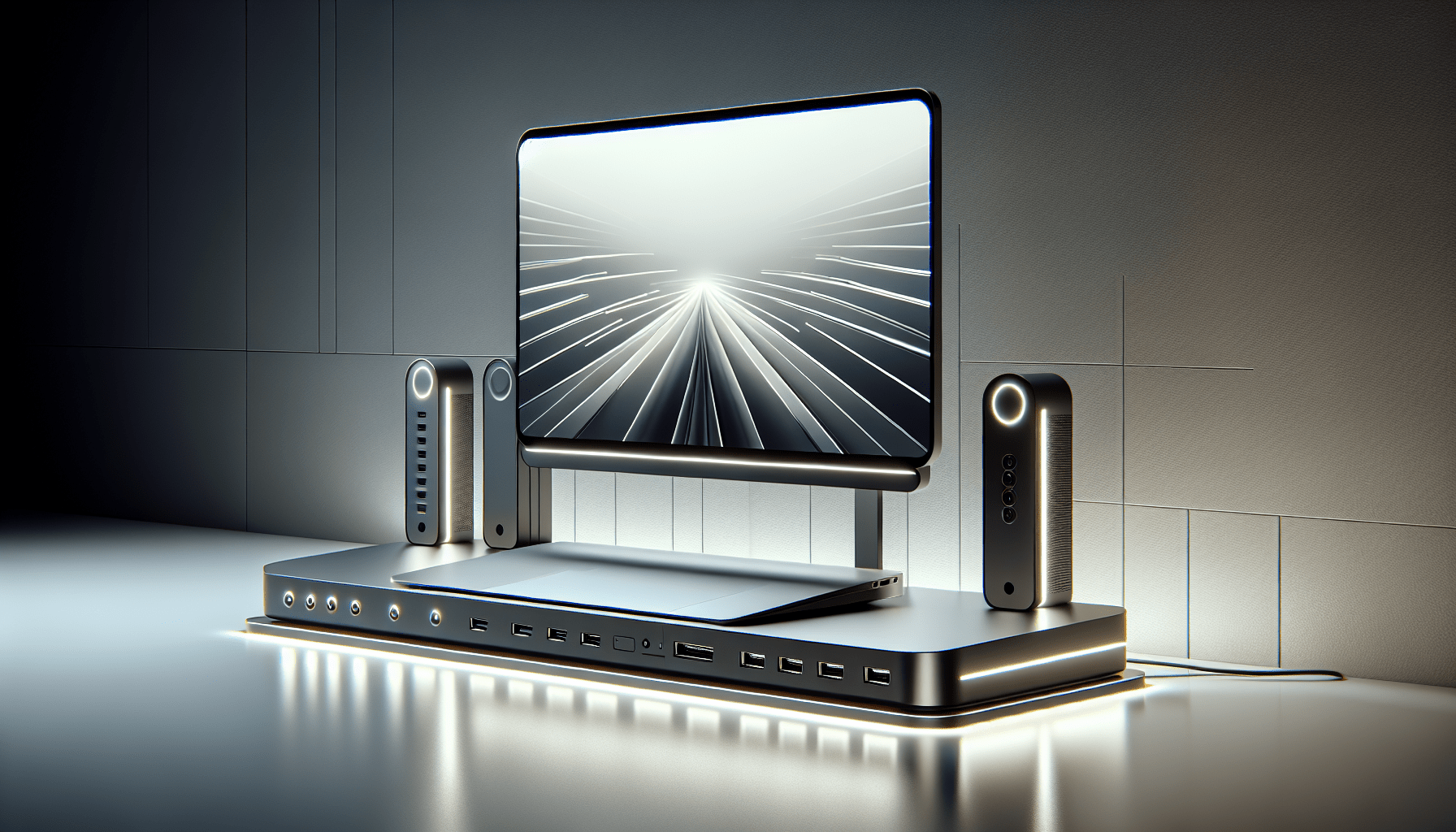
Key Considerations: What to Look for in a Docking Station
We need to match our docking station with our specific needs. Here’s what to consider:
Compatibility
Not all docking stations will play nice with your laptop. Check if your laptop has USB-C or Thunderbolt 3 ports. For Mac users, Thunderbolt 3 docks tend to work seamlessly, while most Windows laptops favor USB-C.
Power Delivery
One of the most enchanting features of a docking station is its ability to charge your laptop while keeping all gadgets connected. Make sure your chosen dock can deliver adequate power to your laptop, usually between 60W to 100W or more, depending on your laptop’s requirements.
Connectivity Options
Evaluate your current and future needs. If you foresee a dual-monitor setup, pick a dock with at least two video outputs. Similarly, assess whether you’ll need extra USB ports, SD card readers, or Ethernet connectivity.
Portability vs Permanence
Do you need a fortress for your desk or a road warrior for your travels? Some docks are portable with compact designs, while others serve as a permanent fixture on your desk. It’s all about finding your Goldilocks zone.
Setting Up Your Docking Station: It’s Easier Than Assembling IKEA Furniture
When it comes to setting up your newfound tech companion, we promise it’s not nearly as complicated as assembling an IKEA bedframe, nor does it require an Allen wrench.
Basic Setup Steps:
-
Place your docking station: Choose a suitable location where cables can reach comfortably.
-
Connect your devices: Plug in your external monitors, mouse, keyboard, and other peripherals into the dock.
-
Connect power: Hook up the docking station’s power adapter if it requires one.
-
Connect to your laptop: Simply plug the dock into your laptop. Voilà, you should now see your setup come alive!
-
Configurations: If needed, go into your display settings to configure your monitors and adjust other device settings.
Isn’t it wonderfully hassle-free when things just work?

Docks for the Windows Enthusiasts
We know Windows laptops thrive on versatility, and the docking station options for these devices echo just that.
Our Top Picks:
Dell D6000 Universal Dock
This dock sports USB-C compatibility and can support up to three displays. Despite its robust features, it’s surprisingly compact. For the traveler in us, the Dell D6000 speaks to our desire to pack light and efficiently.
Kensington SD5700T
A Thunderbolt 3 champion, it’s perfect for Windows power users. Capable of supporting dual-4K displays and ample connectivity options, it’s like making a wish to a technological genie.
Apple Aficionados: Docks that Pair Perfectly with MacBooks
MacBooks and stylish accessories go together like peanut butter and jelly. A well-chosen docking station can complement your sleek Apple hardware, eliminating dongle clutter.
Our Top Picks:
CalDigit TS3 Plus
This darling of the docking station world holds its place for good reason: Thunderbolt 3 support, 15 ports, and a 85W power delivery that keeps even the most demanding Macs happy. It’s the docking station equivalent of a luxury car.
Belkin Thunderbolt 3 Dock Pro
A refined choice, with the ability to sate multiple 4K display needs and power delivery suitable for MacBooks. It’s the definition of elegance meeting efficiency.
Maximizing Productivity: Dual Monitors and More
In the realm of productivity, multitasking is king. Docking stations elevate this by supporting dual or even triple monitor setups. More screens, more space for spreadsheets, code, or terrifyingly detailed fantasy football stats.
Advantages of Multiple Monitors:
-
Increased Work Area: More screen real estate results in less time shuffling between windows, offering a smoother workflow with fewer interruptions.
-
Enhanced Focus: Assign specific tasks or windows to each screen, such as one for email and another for research or document editing.
-
Creative Flexibility: Ideal for graphic designers and video editors to have their tools running seamlessly while focusing on creative content.
Troubleshooting Common Docking Station Issues
We all stumble, even our gadgets. But rest easy, common docking station problems often have simple solutions.
Display Issues
-
Check Cables: Ensure all cables are properly connected. Even seasoned users occasionally miss a connection point.
-
Driver Updates: Make sure your laptop drivers and the docking station firmware are up-to-date. These updates often resolve display and connectivity issues.
Connectivity Problems
-
Port Checks: Try different ports on the docking station to rule out faulty connections.
-
Power Cycles: Unplug everything, from laptop to peripherals, then plug back in systematically. The digital equivalent of turning it off and on again.
Power Delivery Concerns
- Wattage Checks: Ensure the dock’s power delivery capacity meets or exceeds the requirements of your laptop. Less power can result in slower charging or inability to maintain power.
The Future of Workspaces: Less is More
Moving to a digital workspace promises simplicity and efficiency. With docking stations at the forefront, we can embrace the idea that less truly is more. We can strip our desks of clutter, maintain connectivity, and nourish our laptops with the power to keep going. We become just a little bit closer to a smarter, seamless future.
We hope this exploration into docking stations guides you toward your perfect pairing. With the right dock, our laptops transform not just into a device, but a hub of creativity, productivity, and possibility. Let’s embrace this era of tech-savvy, minimalistic workspaces, and appreciate every untangled moment of it.
